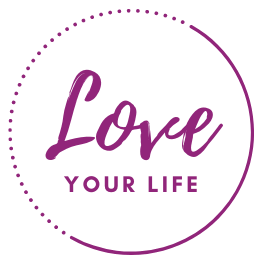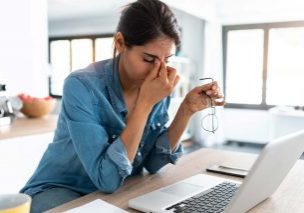Of all the many things that I’ve ever worried about, staying safe at home in quarantine to avoid a viral pandemic, was not one of them. Yet, with no prior worrying or planning, I’m here and ready to cope, and you can too. Here are 10 tips to help you get through it.
If thoughts about the future are scaring you, try to be in the moment, and take things one day at a time – or even minute by minute.
Imagining what “could” happen is your brain’s way of trying to cope; technically pre-coping. It’s like going out with an umbrella today because you think it might rain sometime in the future, even though that’s not the daily forecast.
For worries related to COVID-19, this means that thoughts about the future do not equal what the future will be.
While you might think that imagining all the terrible things that could happen is helping you to pre-cope, it is more likely to give you anxiety and wear you out.
So, if you are getting worried about what you imagine the future to be, try to stay in the moment – use any of your 5 senses to do that – notice what you see, smell, hear, taste, or feel. All of those things are happening right here and now, not in the future. Focusing on them will bring you back into the safety of the present moment.
You can still plan and prepare for later. Planning is not worrying. For example, writing down a shopping list is planning. Ruminating all day that you might run out of groceries is worrying.
Whenever possible, notice that you are worrying, and try to redirect yourself towards planning, or being in the moment, or doing something useful or important to you. For example, if you find it hard to let go of worries, you can still do something useful at the same time, such as doing the dishes.
You can also remind yourself that thoughts about the future are thoughts about the future, not the future itself.
Problem-solve. Try to notice what is within your control, and do that.
For example, if your kids are becoming difficult, outline the family rules and then enforce them using rewards and consequences. If you need to go grocery shopping, follow recommended guidelines, such as not touching your face and keeping a safe distance from others. Other things you can do to stay safe, include things like washing your hands with soap and water for 20 seconds, and keeping your immune system strong by getting enough sleep, eating healthy foods, exercising, and managing stress.
You can also make sure that you have enough medications on hand, and practice social distancing: stay home as much as possible, including working from home – if permitted. For more health and safety guidelines in English, please go here: https://www.quebec.ca/en/health/health-issues/a-z/2019-coronavirus/
Try to name your emotions, and allow them to be as they are.
For example, “right now I’m feeling stressed because things are uncertain”. “Right now I’m worried because I don’t know how long this will take”. “I’m feeling upset that my kids are whining”. “I’m feeling bored”. “I’m feeling scared”. “I’m feeling happy that I have a bit of time to organize my house”. “I’m grieving the loss of my freedom”.
Allow yourself to notice all of these feelings. You can write them down in a journal or talk to someone about them. You can accept an emotion, and let it guide you towards meaningful actions. For example, if you’re feeling bored, you can decide to do something that will be helpful to you, such as doing something fun, productive, or relaxing.
Social connection while “social distancing”.
Social distancing is the new way to say “Stay 6 to 10 feet away from others so that we can stop the spread of COVID-19”. When you go for walks outside, and you see someone coming and you cross the street… you can still smile, nod, or say hi. These tiny interactions will help you to feel more connected – we are all in this together.
If you feel too tired/worried/anxious/sick to call or video chat with friends or family, try to take smaller steps, such as sending an email or text message like “Hi! I miss you. I’m not feeling well, but I just wanted to say hi”. Or “Hi! How are you? I’m too tired to talk, but just wanted to see how you were doing.” That type of thing can make you feel more connected without draining your energy – in fact, it might even boost it.
Another option is to comment on social media, e.g., like a post, post a comment, etc. By putting yourself out there a little bit, it opens up chances for positive social interactions with others.
Give yourself and others a break… Practice radical acceptance.
Not being as productive as usual? That’s OK, you are trying your best. Your partner brought home pickled garlic instead of regular garlic… no problem just wash that gross juice off before slicing. Your kids are whining because you’ve set a limit to how many Paw Patrol episodes they can watch…. that’s OK, they are allowed to feel upset, who wouldn’t want to binge-watch their favourite show. Give them a hug, let them know it’s OK to be upset, and then try to find another activity that could still be fun.
If you have extra time and want to re-organize your spice drawer, great! However, it’s completely fine if you are just struggling to get by. You’re still a hero: Everyone’s situation is different, respect where you are, and what is possible for you.
Just breathe. Deeply, from the belly.
When feeling anxious, worried, or stressed, we tend to do short, shallow breaths, which can make us feel even more anxious.
Place one hand on your belly and one hand on your chest. As you breathe, notice which hand is moving. If the hand on your chest is moving but not the one on your belly, you are doing shallow breathing.
Take a few minutes to try belly breathing. First, blow out all the air. Then, as you take a deep breath in, imagine your tummy filling with air, like a balloon. Then, as you slowly exhale, imagine all the air is going out of the balloon/tummy. Repeat for a few minutes… inhale (fill the balloon/tummy) and exhale (empty the balloon/tummy).
You can try to do this for 5 minutes a few times a day, just noticing your breathing. If you notice any thoughts, try to let them go, and re-direct your attention towards your breathing.
Some people find focusing on breathing to be anxiety-provoking, especially if you have asthma. If this is the case for you, no need to do this. But you can still take a couple of seconds to notice if you are belly breathing or not, and try to do so, without completely focusing on that as an activity per say.
Notice what’s going well, and make space for the good stuff, like humour.
It’s natural for us to notice danger. In fact, it helps us to survive.
However, being stuck in survival mode can become draining after a while. Try to notice what things are going well… Are you safe? Do you have food, shelter, or other things to be grateful for? Noticing things big and small can help you to take a break from worrying. In terms of making space for good stuff and humour, it doesn’t need to be COVID-related. It can be anything that you find enjoyable – such as doing arts and crafts, listening or playing music, watching a funny video, etc.
Try to get some fresh air, sunlight, and exercise if permitted.
Depending on your physical health or government regulations, do what’s safe for you. However, if you’re able to leave the house to go for a walk, even a short one, it can boost your spirits.
Try to keep a regular routine.
If you are working from home, it can feel pointless to shower, keep a routine, or get out of your PJs. However, if you find yourself feeling depressed, down, or lethargic, taking a shower and/or getting dressed can boost your mood. Motivation follows action. Once ready for the day, you might feel motivated to do something else, like take a walk or call a friend. Writing down a schedule can help you stick to it. If home with other people, include them in creating the schedule, if that’s helpful to you and them.
Use social media in a way that enhances your mental health.
Notice the impact that different types of social media have on you. If scrolling on Facebook exposes you to random stories that scare you, it’s OK to take a break from using it, or to use it differently.
For example, instead of scrolling you could check out a particular friend’s profile, or share things on your profile that you find helpful. If watching the news stresses you out too much, find another way to get the news you need, e.g., asking a loved one for updates, or googling the specific questions you need answers to. However, remember that there can be misinformation out there, so please stick to credible sources.

This post is part of the blog series "Love Your Life", mental health advice by Dr Emily Blake, Psychologist.
ABOUT THE AUTHOR
Dr Emily Blake, Psychologist
Dr. Blake is the owner and director of the Blake Psychology clinic and a regular contributor to the blog.
MORE POSTS IN THE SERIES















